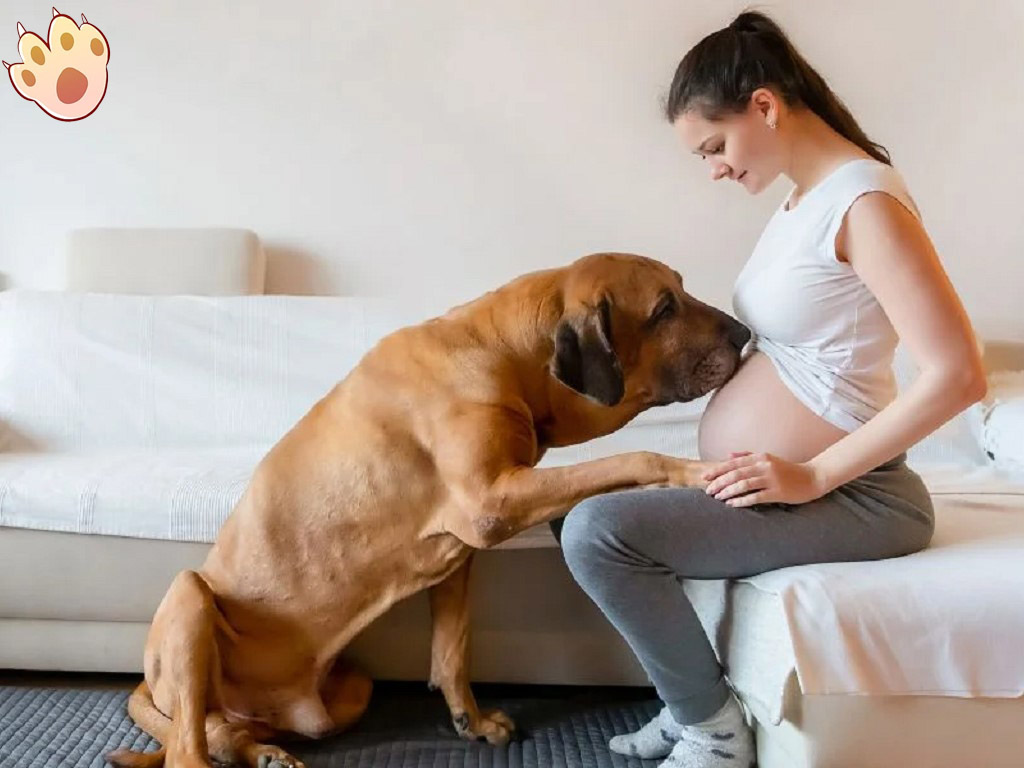
Most of prospective parents have enough time to prepare for a baby, but for unprepared dogs, their new “roommates” seems to appeared overnight. If you are expecting your baby, you must ensure your dog always feels like a part of the family.
In this article, you will learn how to help your dog make preparation to adjust to changes in daily life, and all kinds of unusual sights, sounds and smells of a newborn. We also prepared some suggestions for puppies.
If you prepare in advance, your dog may quickly adapt to this new experience.
This video is owned by the original creator on YouTube and is embedded in compliance with YouTube's Terms of Service. Our website provides independent commentary and analysis.
Why Do Some Dogs Have Difficulty with A New Baby?
Having a newborn overnight can be a dramatic experience for dogs -- an unexpected change to their lifestyle.
Dogs generally prefer a predictable routine, because it gives them more confidence. Without preparations for the changes, they may feel very uneasy.
When there is a newborn, your dog may get less attention and shorter walks than before. They may also need to spend more time alone, or not be allowed into certain rooms.
The arrival of a newborn also means the appearance of new things in home, such as loud and unusual sounds, unfamiliar smells, and possibly lots of visitors.

How to Start Preparing Your Dog?
The earlier you make preparations for dogs, the more time they have to adapt to and feel comfortable. This also allows you to move at your dog’s pace, which is important for their confidence.
Think about what situations your dog will need to adapt to, and gradually introduce thoese situations in advance. You can reward them with their favorite treats or toys, and ensure the process is introduced step by step; in this way, your dog has enough time to learn, practice, and get it right at each stage.
You will get a reward after the baby is born for the time you devote it now. You’ll be able to devote your time getting to know the baby, confident that you have taught your puppy some useful skills to help them feel settled too.
1.Set up Baby Equipment and Toys
Don’t prepare baby’s new things until they born. Few months before the baby born, you can gradually place around your house equipment such as:
•Baby gym
•High chair
•A cradle that rotates and makes special sounds
•Playpen
•Stroller
•Toys
In this way, your dog has enough time to adapt to these items. Ensure your dog can get close to and sniff these items freely. Let them explore at their own pace, and build positive association by giving them treats, chews, or playing games when you introduce them new items.
2.Play Baby Noises at Home
Baby’s sounds may startle dogs, so you’d better play audio clips at home to make them gradually adapt to these sounds.
At first, when your dog is doing their favorite things(such as playing or eating), introducing new sounds related to baby at a low volume.
If they can keep calm and relax, you can gradually increase the volume over the following weeks. If your dog seems worried or anxious in any way, stop playing audio and reduce the volume next time.
3.Introduce Baby Smells at Home
You can borrow some unwashed baby clothes or blankets from your friends with infants, it’s an effective way to introduce baby’s smells to your dog.
Same as noises and equipments, do not make your puppy feel overwhelmed; you need to gradually introduce these sounds and let your dog explore slowly at their own pace. Meanwhile, connect these sounds with things your dog enjoys, such as funny games, treats or gentle petting.
4.Adjust Your Dog’s Routine in Advance
Thinking about how changes your dog’s daily routine will change after the baby is born. You need to gradually introduce those changes long before the due, therefore, your dog has enough time to adapt to new life. This may mean:
•Less attention for your dog, or attention at different times of the day
•Shorter walks time and different walking routes
•Restricted access to certain rooms (for example, the future nursery)
•More visitors, including medical staff who may not interact with your dog
•Installing baby gates to restricts access when needed

5.“Settle Training” – A Vital Skill
Teach your dog to relax on the other side of a doorwith a long-lasting treat or an interactive feeder. This helps them to feel safe and calm on their own.
Consider teaching your dog to feel confident and comfortable resting in a cage. If your dog likes resting in a cage and feel safe, setting the cage as a place to keep your dog is helpful when you have visitors (such as medical staff).
6.Practice Carrying and Interacting with a Baby
Carrying and interacting with a lifelike baby doll means that your dog will see you holding and speaking to a “baby”.
If your dog jumps up, ignore the behavior. Instead, prepare to reward them when all four paws are on the ground.
You can try tossing some treats on the ground while you pick up the “baby” every time, untill your dog will unconsciously put their noses to the ground when they see you pick up the “baby.”
And then, you can continue rewarding them for keeping their paws on the ground. They will learn that putting paws on the ground is a right choice when you are holding a baby.
2018-2025 © PupsLover.All Rights Reserved.